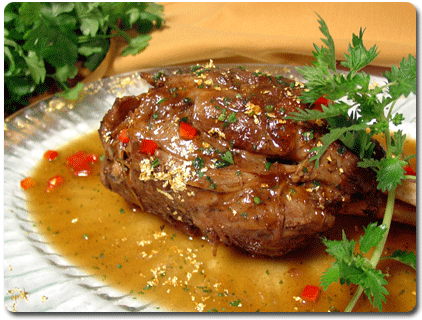Who would believe that the most expensive culinary ingredient in the world at around $46,000 per pound would actually have no aroma and no flavor? But for thousands of years ancient cooks to modern day chefs have been adorning their food with this glittering ingredient that is pure gold
Edible gold is pure 24 carats that is mixed with a tiny amount of silver before being flattened and then turned into flakes, dust, leaves and even a spray. Then it becomes much more affordable in these smaller quantities and can glisten up many a dish.
A company in Japan, Tsukioka Co, has developed a way of printing gold words and motifs onto an edible film that can be floated onto a cup of coffee or any other liquid. They produce 42 designs and can even custom make any message required. ‘Happy Birthday’ is extremely popular, and at only $4 for a small pack this seems priced at a realistic way to really put a sparkle into the day.
The pharaohs of ancient Egypt were early purveyors of edible gold believing that it prolonged life. In Europe 15th century alchemists were adding it to potions to aid digestion; Italian Dukes in the 16th century were decorating their risotto with gold. While over in the UK Elizabethans were sparkling up their bowls of grapes, pomegranates, dates and figs with a sprinkling.

Today gold is still being used the world over. The Japanese like to add a dusting of gold to their sake and also to decorate their food, in India it is called vark and is a necessary adornment to their rice dish of biriyani and many sweets. Gold continues to be teamed with alcohol; in France they produce a premium vodka called Gold Flakes Supreme at around $60 for a 750ml bottle, next door in Switzerland Goldschlager is the cinnamon flavored schnapps sold at just $23 a bottle. Then there are the Poles who have their Goldwasser herbal liqueur whose recipe can be traced back to the 14th century. One argument put forward for the popularity of this alcohol/gold pairing is that the tiny flakes of gold make small scratches to the skin while being swallowed allowing alcohol to enter the bloodstream faster. Or perhaps it’s just the childishness of enjoying shaking the bottle for a ‘snow globe’ effect.
Photos courtesy of Ediblegold.com, Tsukioka Co, flickr Michael clesle, gold bullion